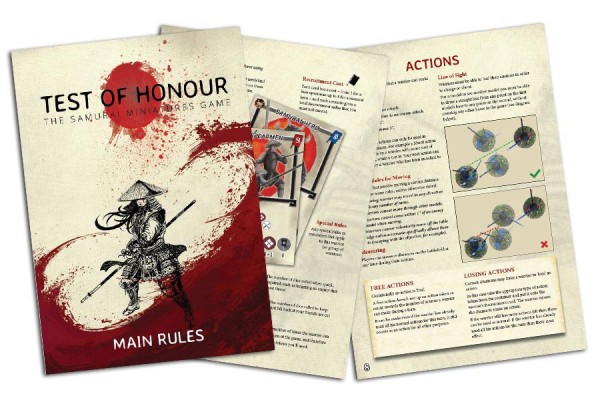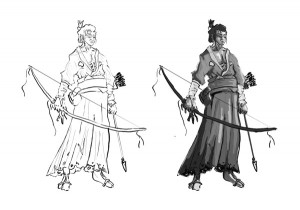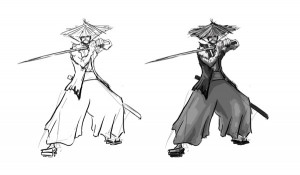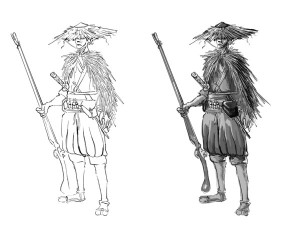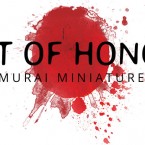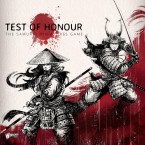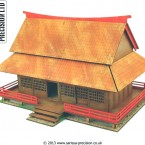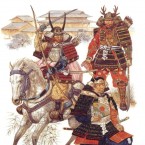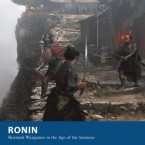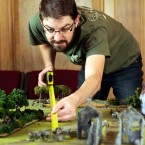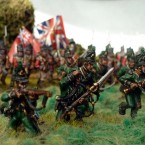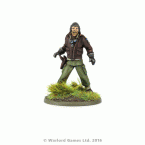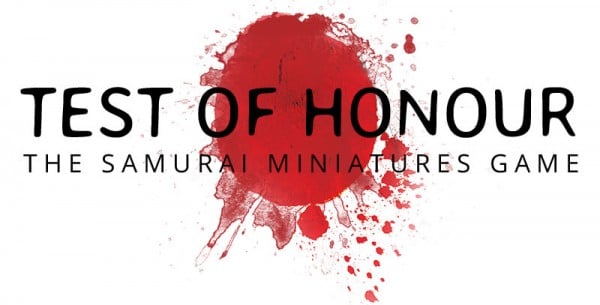
Test of Honour: Designer’s Notes

With pre-orders kicking off on Friday, we asked author Graham Davey to talk us through the development of Test of Honour:
Andy Hobday and I have been friends for a long time having spent many years training together in the Japanese martial art of Aikido. Our enjoyment of throwing each other around a dojo naturally grew into an interest in other Japanese martial arts and in particular the legendary samurai warriors.
Fast-forward to 2015 and Andy and I are both working for Warlord Games, when Andy mentions that he’d like to play some skirmish-level samurai battles…
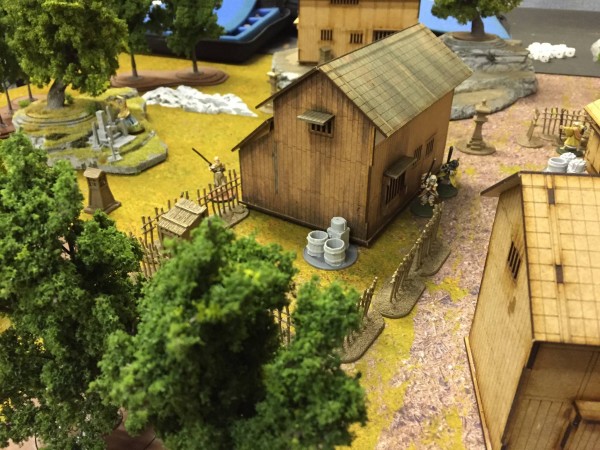
The Concept
We chatted about what kind of game it should be – both of us love the classic Kurosawa samurai movies such as Seven Samurai and Yojimbo where incredibly skilled heroes lay waste to dozens of lesser warriors in dazzling displays of lightning-fast sword-play. It was quickly agreed that this was the feel that we wanted for our battles, rather than a slavishly accurate historical approach.
Core Principles
So with that idea in my head I started scribbling ideas for rules mechanics, trying to capture the spinning, whirling combat of flashing blades and sudden, bloody death.
Right from the start I came up with some core principles that remained in place all the way through the game’s development:
Firstly, warriors are never trapped in combat. It was important that a samurai could strike at an enemy in front of him then spin round and charge someone else and someone else, without getting locked in place in a static exchange of blows.
Next I wanted each dice roll to (more or less) represent a single swing of a katana, so it really felt like you were striking and parrying in a flurry of blows (picture Tom Cruise in The Last Samurai, training with the wooden practice swords). As such, while games of Test of Honour are pretty fast – usually less than an hour – they actually represent just a minute or two of action!
Finally, I wanted it to be possible to have that moment where a samurai slices through a whole string of enemies in an amazing display of nearly super-human ability. This is unashamedly based on samurai in the cinema, and is incredibly good fun when it happens in the game!
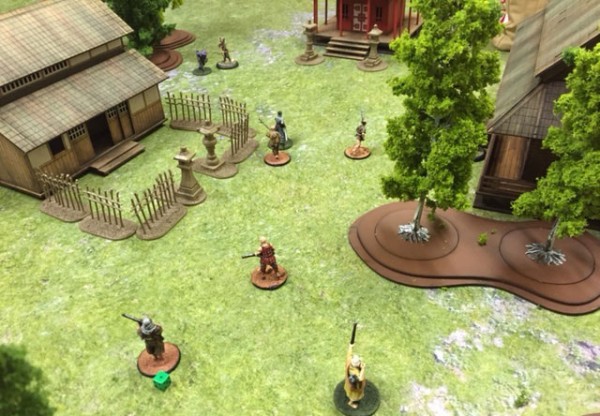
Campaign Play
With a basic rules system in place we started playing regular games between the two of us and other samurai-enthusiast Warlord staffers (thanks guys!), using metal models from the various existing samurai ranges on the market.
We used the excellent range of Sarissa Precision Japanese buildings and scenery (plus some extra bits constructed by terrain guru Rich Carlisle), and a 3’ by 3’ battlefield quickly became the norm allowing us to fit two battles side by side in the space of an average 6’ by 4’ gaming table.
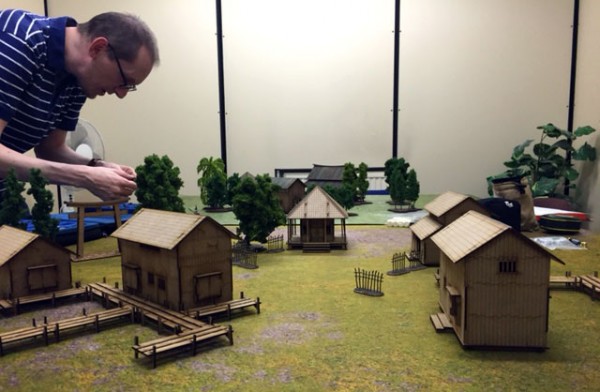
Andy and I wanted to have campaign rules so our warriors could gain experience and learn cool skills in the fashion of other classic warband-based games. We decided that our samurai leaders would travel around, getting in fights and becoming more powerful over time, but they would recruit a new set of soldiers or local thugs to serve them for each battle.
While the list of skills steadily grew, I also wrote a variety of scenarios aimed at recreating some iconic encounters – from simple battles to capture or defend a village to more story-driven games such as finding and escaping with a hidden objective or even protecting your samurai lord from an attack while he prays at a shrine (extra victory points the longer he stays at prayer!).
With the aid of Andy’s extensive historical knowledge we added rules for different clans as well as other things like darkness and weather! (These didn’t end up in the published version, but we might just post them as optional additions down the line!)
As the game became more complete, Andy and I started wondering if we could find a way to get it published. We even had a range of concept sketches drawn by talented design student Jake Roddis – as you can see, our initial vision was a less military, more scruffy look, which ended up being carried through into the Pauper Soldiers expansion set:
Enter Warlord Games…
During this time Warlord had reached a deal to repackage and market the various plastic kits made by Wargames Factory. Their range of Zombie apocalypse models were incorporated into the highly successful Project Z boxed game, and as Wargames Factory also had a range of rather nice samurai plastics, the powers that be at Warlord asked me and Andy if our game would work in a similar format, using those models. Of course, we jumped at the chance!
Special Dice
Suddenly faced with an actual deadline I set about reworking the game. We were able to make special dice for the boxed set so the first job was to overhaul the whole system to work with these instead of ordinary D6s. It was immediately clear that rolling dice with sword blades on the faces made the combat experience much more satisfying. The instant feedback of getting loads of blades (or the despair of getting crosses and blanks) was a great improvement!
Card-based Campaign System
Model selection was streamlined through the use of recruitment cards, and things like skills and wounds were also put onto cards for ease of play. The ongoing campaign system became a matter of retaining cards from game to game, so your samurai learn and improve over time. However, I wanted to make full use of all those interesting skills we’d come up with, even if you’re playing a one-off battle, so you get to draw and use new skills during the course of a game and then if you are playing a campaign, you choose one to keep at the end.
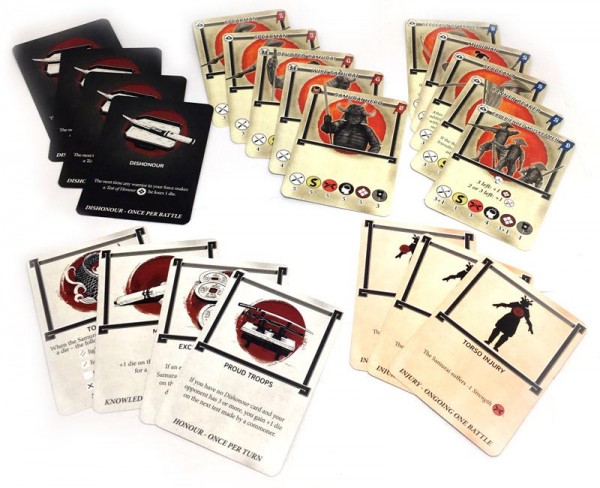
Dishonour
Another key addition was the idea of Dishonour being a constant temptation during a battle – an easy route to success using trickery and deceit, but that you might regret later. In effect you can choose to take a bonus to a combat roll for your samurai hero, but that will then confer a penalty the next time you test for any model to retreat as the men lose faith in their leader. During the game we like to come up with creative ideas to explain the dishonourable bonus – throwing sand in their eyes, insulting their family, etc, etc!
New Models
Perhaps the most exciting part of the project was briefing a selection of new miniature sculpts to go in the expansion boxes and to use as promotional models. These go alongside sets of new heads that can replace the plastic ones to theme the expansion sets. So for example, there is a Ronin set that includes a metal Ronin character model, ‘scruffy’ Ronin heads that go on the samurai plastics, plus a load of extra skill cards that focus on the more nefarious side of the samurai – even gaining extra benefits from behaving dishonourably in battle. Each of the expansion sets is themed in the same way, with its own unique cards.
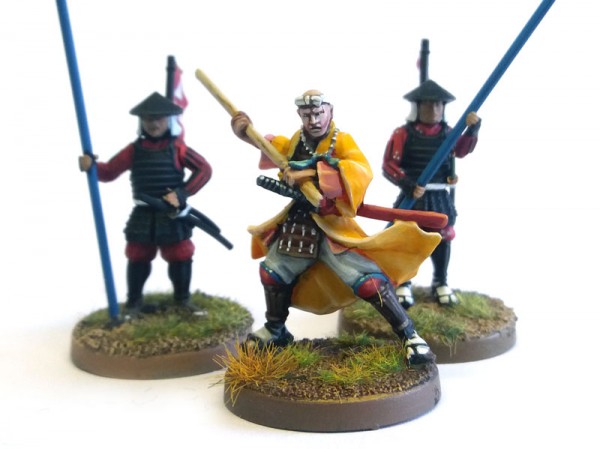
We also had a round plastic multi-base produced to hold three models together in a group. This was something Andy had been suggesting for a long time, but I had stubbornly resisted! However our larger battles were taking anything up to 2 hours to play, so I finally gave in and came up with some rules. Straight away the game time was reduced massively, and it had the additional effect of tidying up the battlefield and making it much easier to see what was going on!
With the game’s release imminent, there are lots more details to discover. And we are looking forward to the community getting involved to come up with new scenarios, expanded campaigns, etc. To that end we’ve set up a Facebook Group for everyone to discuss the game (and for us to show off a few previews of art and game cards).
A huge thanks to everyone who helped along the way. Hopefully you’ll all enjoy playing it as much as we did creating it! – Graham
If you haven’t already, head over to the webstore and download a FREE pdf of the main rules:
